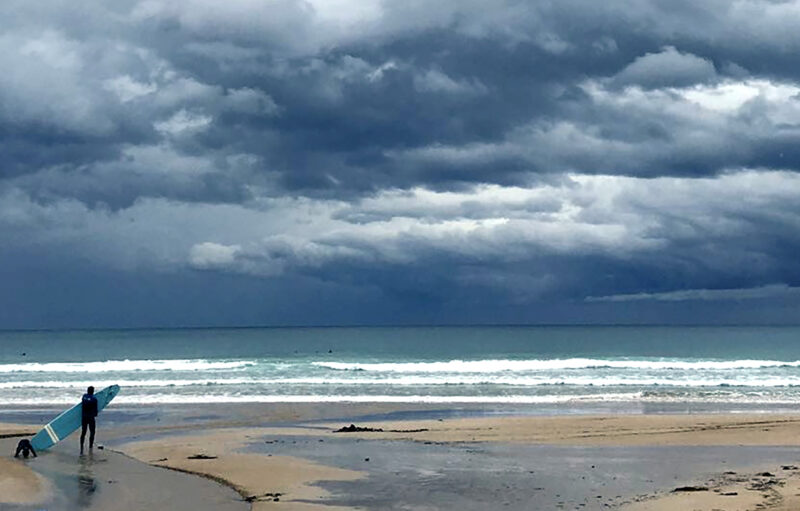PARK WATCH Article December 2023 |
Bertram Lobert, Save Our Strathbogie Forest President, on the balancing act between fire and Greater Gliders
Taking legal action is no small thing for a regional community group. The passionate and dedicated group of volunteers at Save Our Strathbogie Forest (SOSF) are taking the Victorian Government to court as part of our long-term goal to protect an important population of Australia’s largest gliding marsupial, the nationally endangered Southern Greater Glider (Petauroides volans).
SOSF has just celebrated its 10-year anniversary and we’re proud of our achievements. After years of our advocacy, research and lobbying, the Victorian Government removed all native forest logging coupes from the Strathbogie Forest, in Taungurung Country, in May 2019. In November 2019 the entire forest was declared an Immediate Protection Area as part of the Victorian Government’s Greater Glider conservation plan.
In 2022, when SOSF became aware of the proposal to burn up to 2000 ha of Southern Greater Glider habitat in the Strathbogie Forest, we sought to learn more about how such a burn might impact this endangered species. At that time we believe its occupancy in several of the proposed burn areas was poorly known.
Greater Gliders have been known to occur in the Strathbogie Forest for many decades, and in recent years the forest has been regarded as a stronghold for them in Victoria. Extensive government surveys in central, north-east and eastern Victoria in 2018-19 reported average densities of fewer than two animals per spotlight kilometre. Government surveys in the Strathbogie Forest in 2017 recorded an average of nearly ten animals per spotlight kilometre. SOSF’s own surveys have demonstrated that the proposed burn areas contain critical habitat and are home to large numbers of Southern Greater Gliders at an average of between 9 and 17 gliders per kilometre transect.
Burning glider habitat
Fuel reduction is a cornerstone of the broader planned burning program to manage Victoria’s forests. The practice is conducted across hundreds of thousands of hectares annually. However, there is no systematic process that assesses the ecological impact on animals such as Greater Gliders of this landscape-scale action.
The Australian Government’s Greater Glider Conservation Advice lists fire, particularly too-intense, or too-frequent fuel reduction burning as having ‘severe’ consequences that contribute to the losses and declines of populations in the glider’s range.
Victorian fire and conservation policy acknowledges the threat that fuel reduction burning poses to the Greater Glider, yet habitat in the Strathbogie Forest and beyond is regularly subject to such burns. Challenging this contradiction – that the use of fuel reduction burning in habitat supporting healthy greater Glider populations – is at the centre of SOSF’s court case.
In Victoria, the ultimate decisions around when, where and how to burn sit with Forest Fire Management Victoria (FFMV). There is no independent oversight, or process by which the broader planned burning program, or individual planned burns, might be challenged. Victorian fire agencies do not refer planned burns to the Commonwealth department, arguing that they are not required to do so.
Surveys confirmed there are healthy populations of Greater Glider living in this season’s proposed burn areas. SOSF formally asked FFMV and DEECA to cancel the proposed burns, and be referred to the impact assessment unit for the Environment Protection and Biodiversity Conservation Act (EPBC Act). These agencies then need to develop a transparent regulatory framework, or an independent arbiter/process, to assess the impact of planned burns on biodiversity assets such as threatened species and their habitat.
Despite much lobbying and meeting with diverse government representatives, none of our requests were agreed to, or our stated concerns meaningfully addressed. The government asserts it has a constitutional right to conduct the burns and that the planned burns will not have a significant impact on the Greater Glider population in the forest. The government also denies that the proposed burns are in contravention of the EPBC Act. However, section 18(3) states that ‘a person must not take an action that has or will have or is likely to have a significant impact on a listed threatened species included in the endangered category.’
SOSF have launched this legal challenge to have the burns in the Strathbogie Forest referred to the federal environment department, under the EPBC Act. If the case is successful, it may also reduce or stop similar burns in areas critical to the survival of Greater Gliders in other parts of Victoria and Australia.
In the legal battle it’s easy to forget the bigger perspective. A healthy population of Southern Greater Gliders is our goal, but we’re also acting on principle. A clever person once said – we don’t know what we’re doing, because we don’t know what we’re undoing! Too-frequent fires are a direct threat to Southern Greater Gliders because they are undoing the very resilience the forest will need as we plow headlong into the Anthropocene.
The court hearing has been set for late January 2024. Details can be found on the SOSF website.
- Read the latest full edition of Park Watch magazine
- Subscribe to keep up-to-date about this and other nature issues in Victoria
- Become a member to receive Park Watch magazine in print
